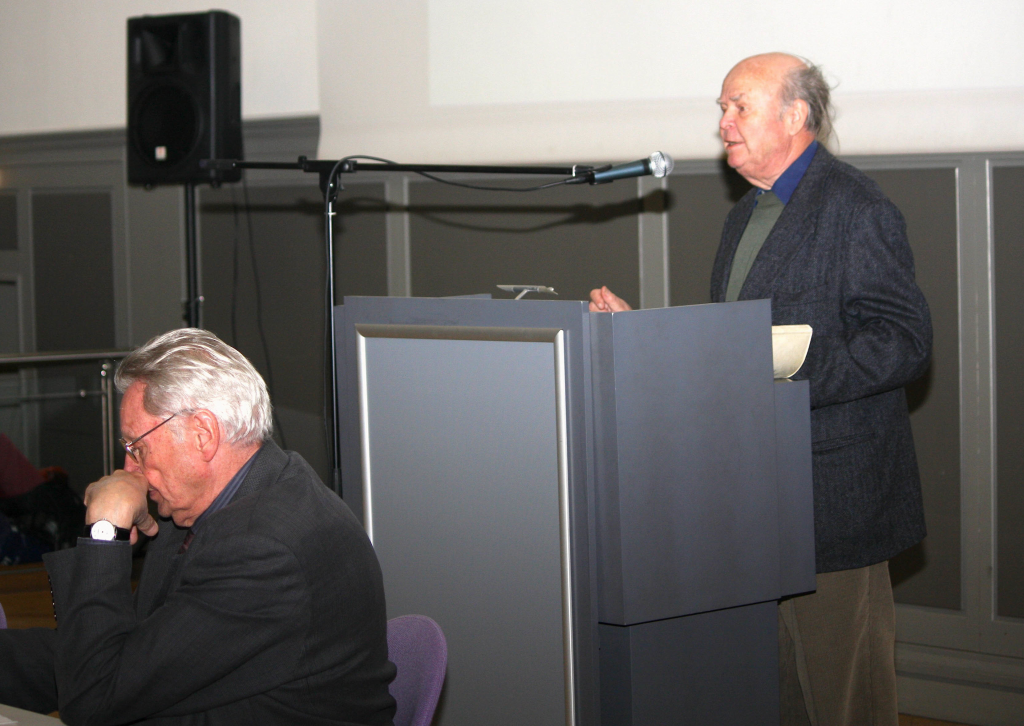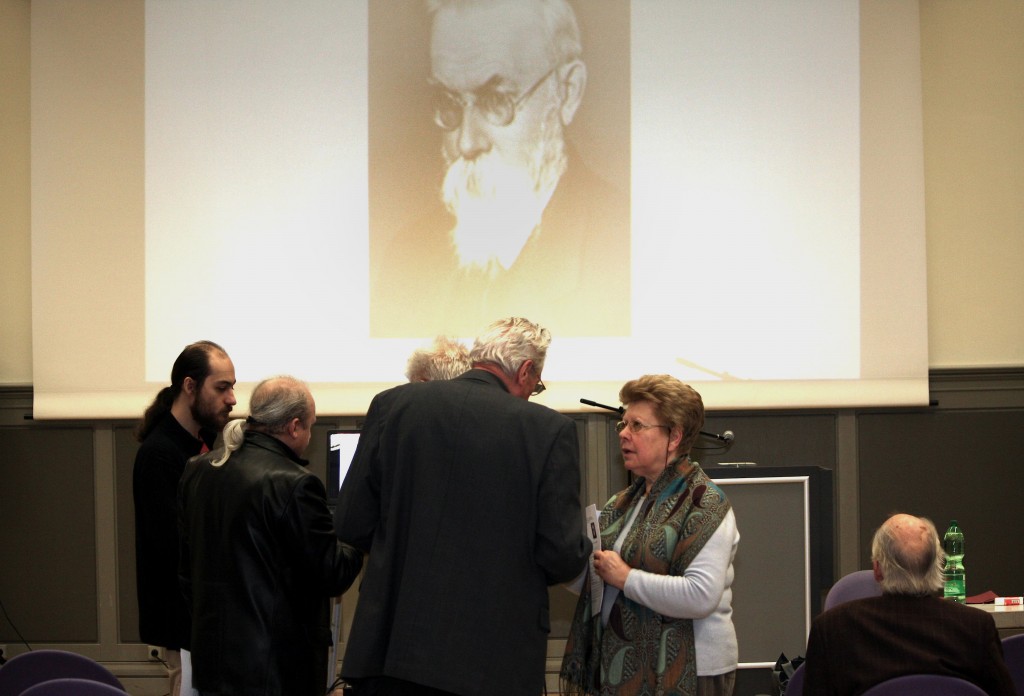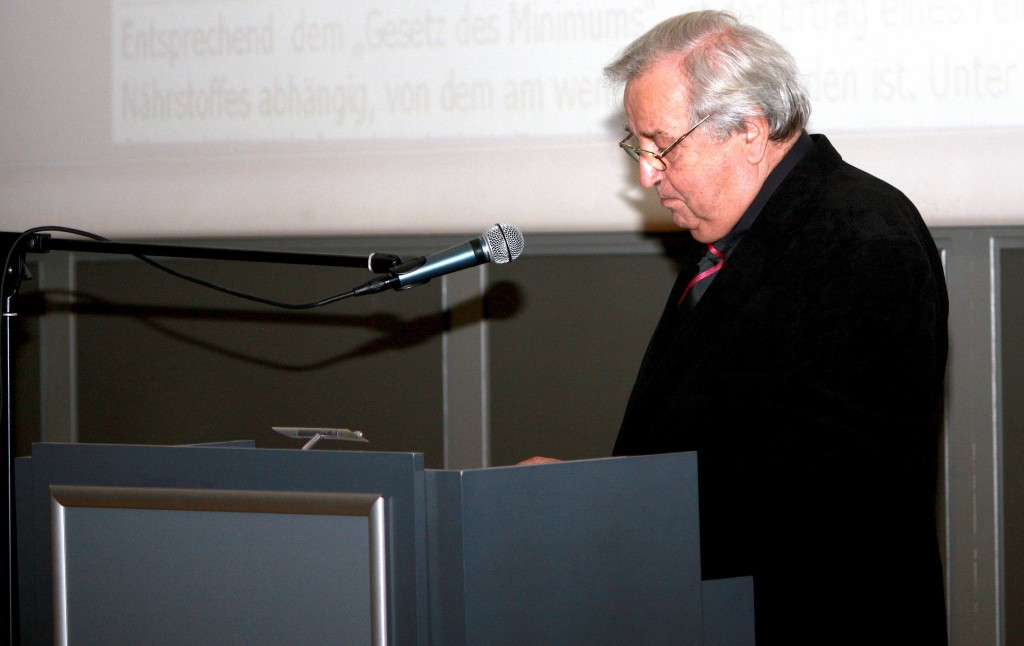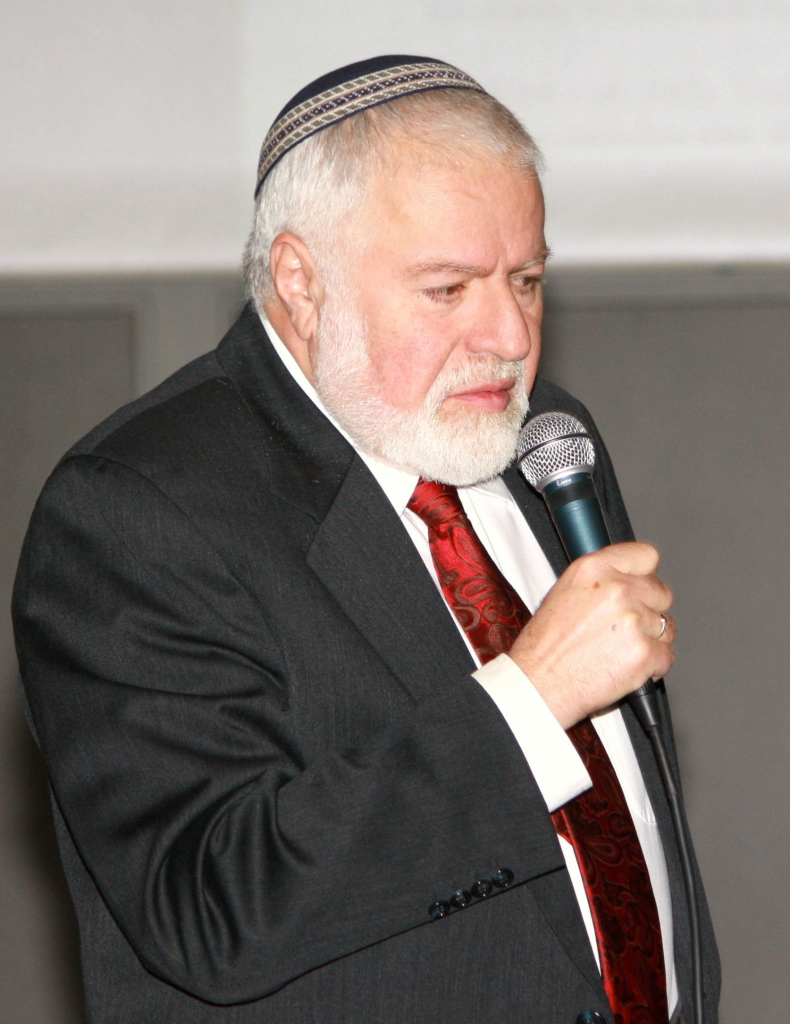Vernadsky project
on 17 November the Leibniz society Berlin held – together with the scientific society of the jewish community Berlin – a seminar on Vernadsky and his contribution to the science of the world.
the co-convenor of the seminar, Heinz Kautzleben, reminded us of Vernadsky’s trend-setting definition of the biosphere, which is distinct from earlier definitions. Süsskind who came up with the concept in the 19th century defined it in terms of space, whereas Teilhard de Chardin at the time of Vernadsky’s defined it as the mass of living beings. Vernadsky made the decisive step to combine both definitions and coined the term as one that fits environmental sciences (the biosphere is made up of living beings and all the matter with which they are in exchange).
from the left: Heinz Kautzleben and Klaus-Dieter Jäger (photo: Valery Tatarskiy, Wissenschaftliche Gesellschaft WiGB bei der Jüdischen Gemeinde zu Berlin)
the importance of Vernadsky is not only related to his founding of the new discipline of biogeochemistry the origins of which date back to 1917. as Peter Krüger pointed out, already 4 years earlier another idea of Vernadsky’s matured: the idea of humans as geological factor, which finally lead Vernadsky to conceive the noosphere.
in that context, Klaus-Dieter Jäger raised an important question: which geological age is it we do currently live in? in the 60s, researchers in Czechoslovakia defined our geological age as “anthropozoicum”. Jäger’s criticism is that the anthropozoicum would include the whole pleistocene and thus times in which the footprint of humans can not yet be found. another classification agreed upon by geologists characterises our geological age as holocene. if a “noocene” is to be cast – when would holocene close and when would noocene commence?
in my view, evolutionary systems theory can help clarify. a new phase is characterised by a dominating feature. that feature might have been there before that phase but as a feature only that did not yet dominate. as soon as it becomes dominating, it can lend its name to the new phase. Berlin critical psychologist Klaus Holzkamp applied this methodology when writing about anthroposociogenesis. we are witnessing an ever increasing influence of humanity on planet earth. by means of division of labour, human language and reflexion as properties distinct from properties that pertain to living systems on prehuman stages, human social systems emerged that possess an innate tendency toward penetrating and reworking the biosphere. science, which was very important for Vernadsky (and i learned from Rose-Luise Winkler that Vernadsky can be regarded as pioneer of empirical science of science), is just one step in that unfolding of the process of shaping the earth. – the question is which feature can be considered to be the dominating feature for which evolutionary phase? if we want to draw another distinction between ratio as powerful means and reason as reflection upon the ends, then we have to admit that in the course of civilisation a radical change of the surface of our planet has been set in motion due to the powerful means science and technology have provided; however, no success so far can be attributed to attempts to shift the development of social systems onto a sustainable path in order to guarantee a future for all. if we want to reserve the notion of “noos” for the second distinction, the noocene has not yet commenced but it is an idea whose time has come!
Rose-Luise Winkler communicating with participants (photo: Valery Tatarskiy, Wissenschaftliche Gesellschaft WiGB bei der Jüdischen Gemeinde zu Berlin)
what we can concede is that the technological infosphere is a precondition for the advent of the noosphere and there are germs of the noosphere like the IPCC, as Klaus Fuchs-Kittowski pointed out. it is up to us to intervene and shape the process. to paraphrase Boris Schapiro, it’s our task to make sense of the point of evolution we have reached.
Klaus Fuchs-Kittowski (photo: Valery Tatarskiy, Wissenschaftliche Gesellschaft WiGB bei der Jüdischen Gemeinde zu Berlin)
Boris Schapiro (photo: Valery Tatarskiy, Wissenschaftliche Gesellschaft WiGB bei der Jüdischen Gemeinde zu Berlin)
read more about the meeting in the context of the Vernadsky project (in German). here you find data about Vernadsky’s life (Peter Krüger’s presentation in german).




